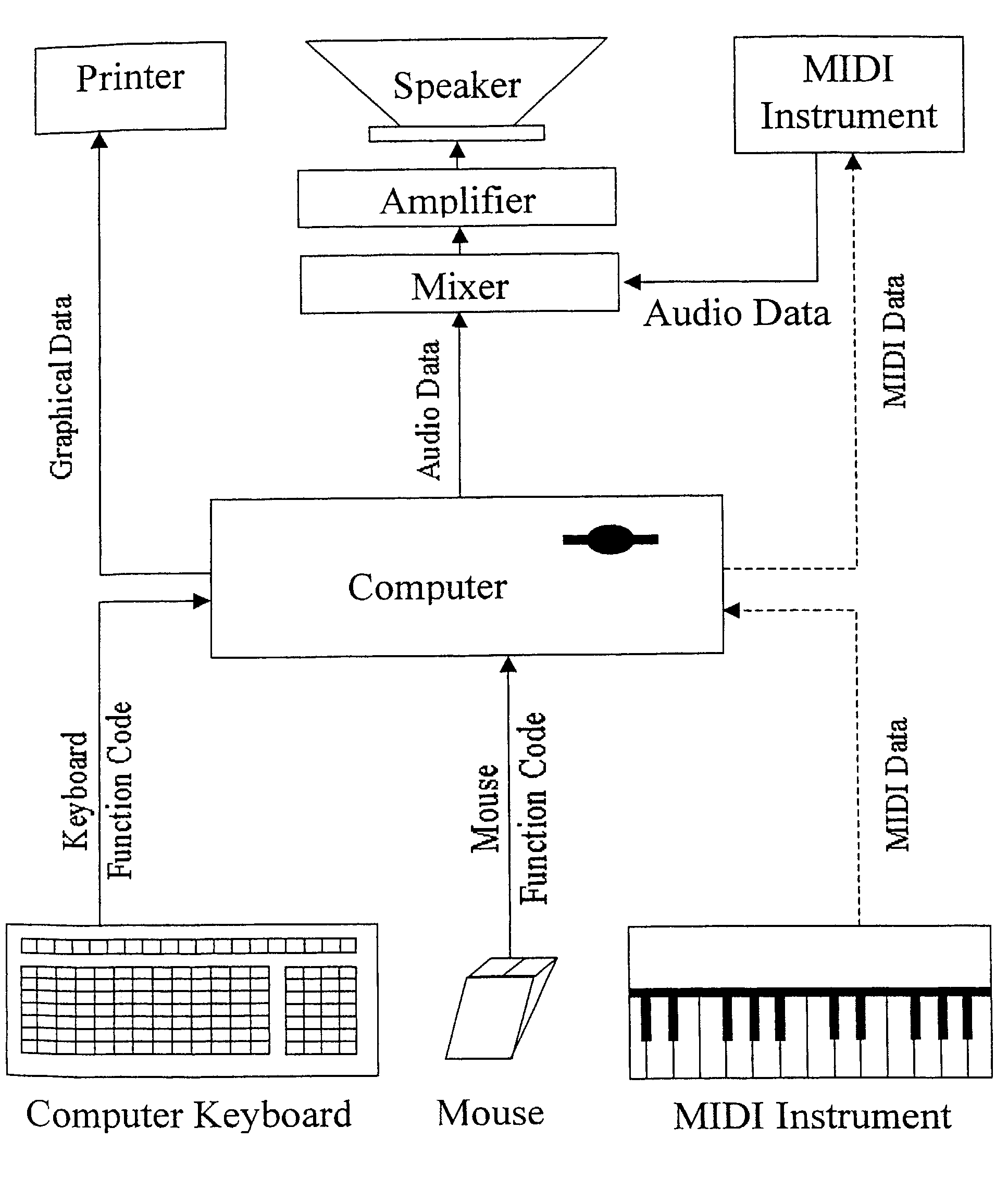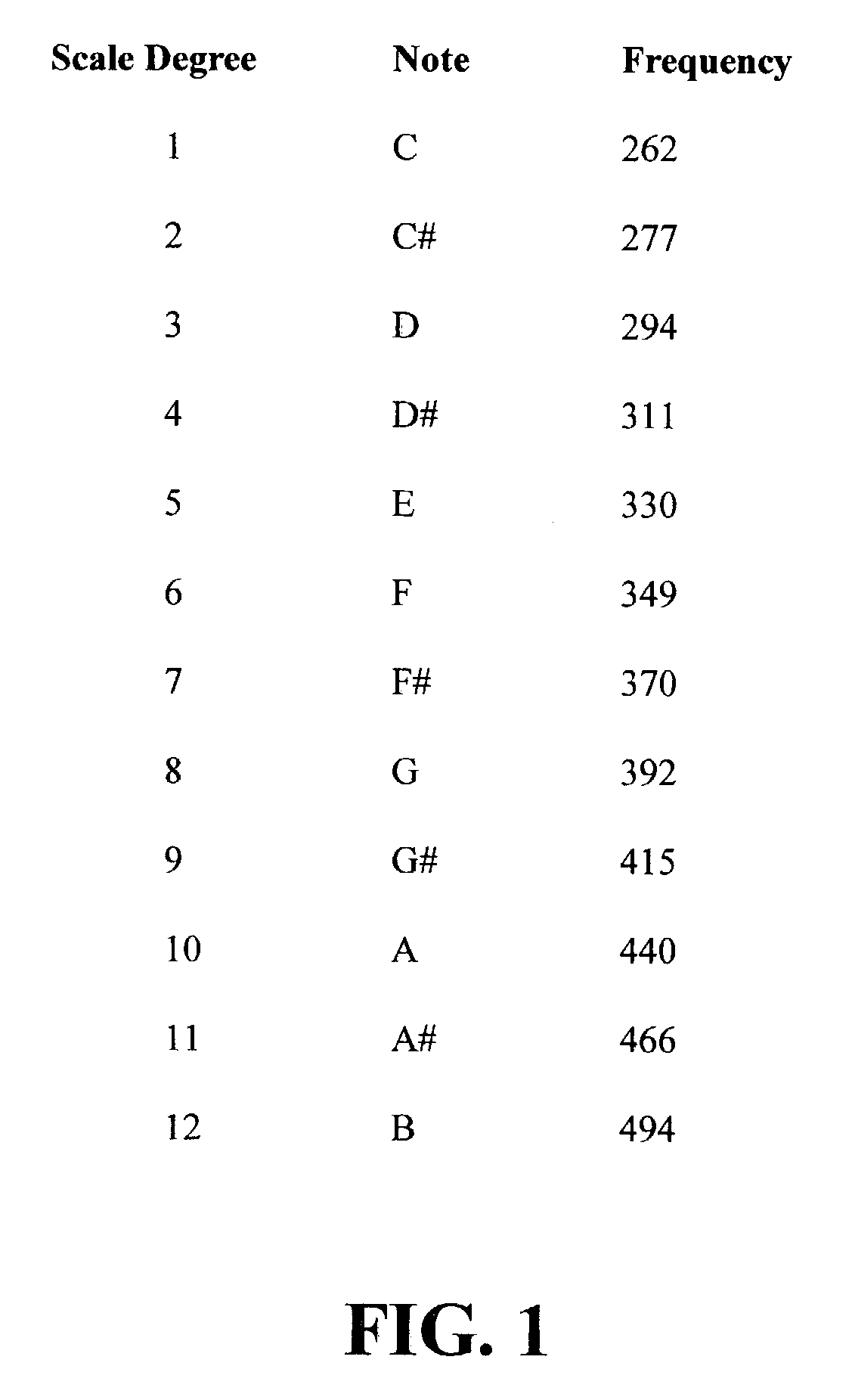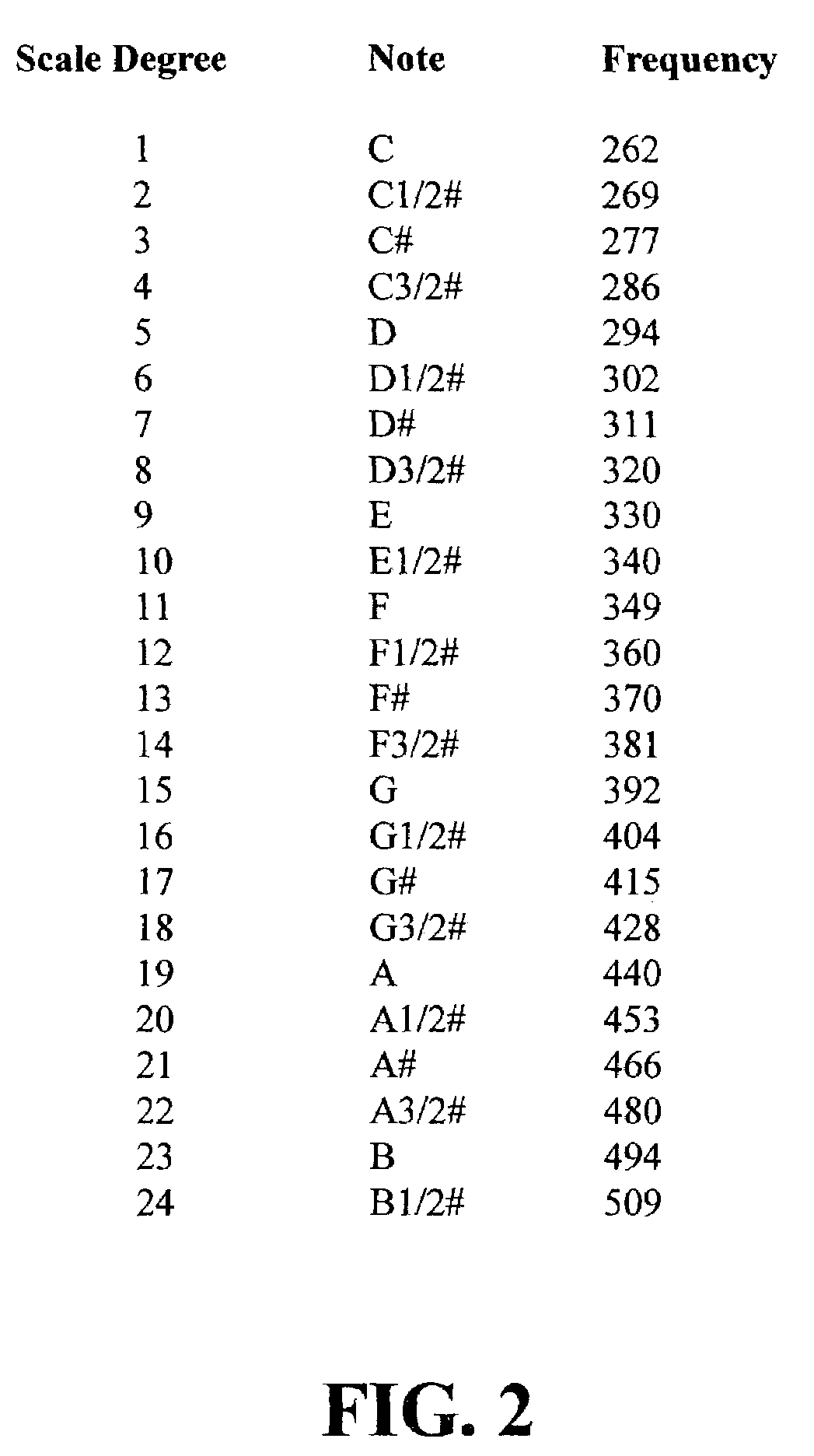Dynamic microtunable MIDI interface process and device
- Summary
- Abstract
- Description
- Claims
- Application Information
AI Technical Summary
Benefits of technology
Problems solved by technology
Method used
Image
Examples
Embodiment Construction
[0080]As mentioned previously, Polyphonic Aftertouch is used to represent the horizontal and vertical variations in pressure placed on a keyboard key after it is depressed. A variation in vertical pressure typically reflects the musician's desire to vary the volume. A variation in the horizontal pressure typically reflects the musician's desire to vary the pitch. Thus, the MIDI standard includes the fact that Polyphonic Aftertouch can be used to vary the pitch of a note.
[0081]Polyphonic Aftertouch messages are standard in MIDI. Most MIDI devices incorporate the feature. Polyphonic Aftertouch also works on individual notes, thus enabling selective retuning. Finally, Polyphonic Aftertouch messages are short, meaning that they can be transmitted in real time without sacrificing system performance.
[0082]A typical Polyphonic Aftertouch message is composed of three bytes: one Status Byte, followed by two Data Bytes. The First Data Byte specifies the note and the Second Data Byte specifies...
PUM
 Login to View More
Login to View More Abstract
Description
Claims
Application Information
 Login to View More
Login to View More - R&D
- Intellectual Property
- Life Sciences
- Materials
- Tech Scout
- Unparalleled Data Quality
- Higher Quality Content
- 60% Fewer Hallucinations
Browse by: Latest US Patents, China's latest patents, Technical Efficacy Thesaurus, Application Domain, Technology Topic, Popular Technical Reports.
© 2025 PatSnap. All rights reserved.Legal|Privacy policy|Modern Slavery Act Transparency Statement|Sitemap|About US| Contact US: help@patsnap.com



